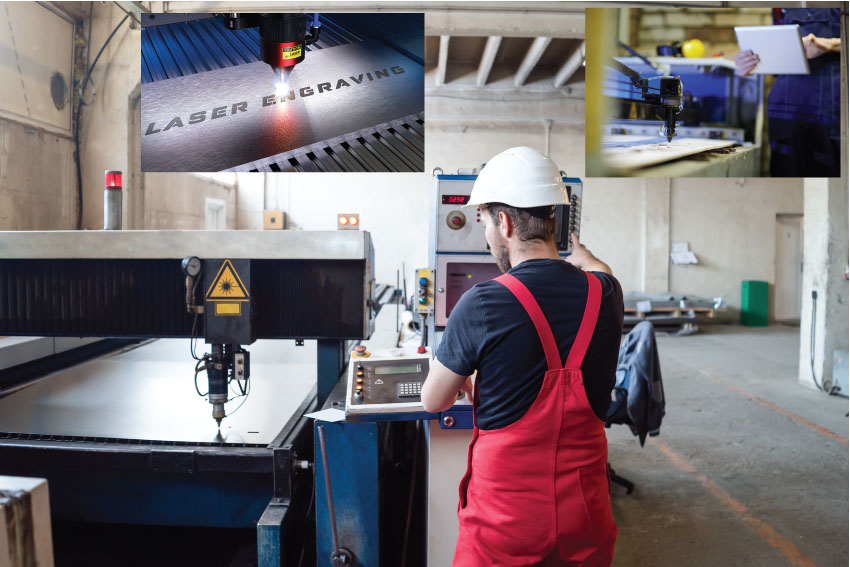
Laser engraving is an effective method of creating long-lasting, weather-resistant signage, popularised for sturdy materials like metal, wood, and leather. But how does the process actually work?
In this blog post, we’ll look at some of the most pressing questions around laser engravings, covering everything you need to know before getting started in creating your own signs.
How Does Laser Engraving Work?
During the laser engraving process, the laser acts as a chisel to carve out whatever letters or images you choose to engrave. It vaporises the material into fumes, leaving behind the deep, engraved marks.
Usually, laser engraving is used for signage that will be placed somewhere that it will be exposed to wear and tear. The results of laser engraving are so precise that you can engrave 2D codes that remain easily readable, as long as they are correctly treated.
How Does Laser Etching Work?
It’s important to note that laser engraving is not the same as laser etching. The easiest way to tell the difference between the two is in the surface effect they leave.
Laser engraving leaves a cone-shaped depression in the material to leave a deep mark. Laser etching, on the other hand, melts the surface of the metal instead of vaporising it. This leaves a much shallower impression.
How A Laser Beam Works
‘Laser’ is actually an acronym of ‘light amplification by stimulated emission of radiation’. The laser beam itself is light energy formed by excited photons.
Where laser etching creates a liquid, engraving sublimates the material, meaning that the laser turns the material directly from a solid to a gas. For this to happen, the laser itself needs to have enough energy to almost immediately vaporise the material it’s engraving. Lasers, therefore, function by being incredibly hot.
The temperature a laser needs to be will vary depending on which metal it is you’re engraving, as they will have different vaporisation temperatures. This is something that you need to consider in the early stages of the laser engraving process.
How Do You Safely Engrave with a Laser?
As you can imagine, laser engraving is a dangerous task. Laser systems, therefore, always come with a fume extraction kit and an air knife.
The fume extraction kit will keep your work environment safe by removing fumes from the air that are created during the laser engraving process. The air knife is used to protect the laser’s lens, as it can be used to blow high-pressure air into the workpiece as its being engraved. This stops the piece from being burnt by the laser.
As well as using these additional tools, you should always make sure that you wear the correct protective clothing when dealing with dangerous items like lasers.
Can You Create Designs with Laser Engraving?
There are two techniques to create contrast when engraving that can be used to create texture and colour variation in your piece.
The faster of the two methods is only possible on certain materials, as it relies on the bare mineral colour being light enough to see against the dark colour that the laser engraving will leave. During this process, some of the surface will be carved much deeper than other places. The shallower parts will just expose the bare minerals, rather than fully engraving the metal.
The second process takes longer, but is more effective. You can use a combination of laser engraving and laser etching to create different marks. Laser engraving, as established, cuts far deeper than laser etching. The former, then, will leave a dark black mark, whereas the latter will show as white. Used in conjunction, these two forms of marking material with lasers can create a long-lasting, effective, two-toned workpiece.
Engraved Signage with Label Source
If you’re looking to laser engrave or laser etch your own signage, start by looking at the blank metal nameplates that we have for sale here at Label Source.
To keep up to date with the latest news and information on health and safety, have a look at our blog, or follow us on Twitter.